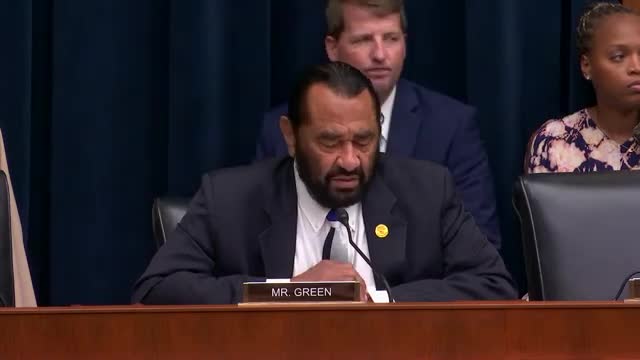Lawmakers warn of rapid bank runs amid financial instability
September 25, 2024 | Financial Services: House Committee, Standing Committees - House & Senate, Congressional Hearings Compilation
This article was created by AI summarizing key points discussed. AI makes mistakes, so for full details and context, please refer to the video of the full meeting. Please report any errors so we can fix them. Report an error »

In a recent government meeting, discussions centered on the implications of rapid bank runs, particularly in light of the recent Silicon Valley Bank failure, which marked the largest bank collapse in the U.S. since the 2008 financial crisis. Lawmakers expressed concerns about the speed at which depositors can withdraw funds, exacerbated by the influence of social media, which can accelerate panic and lead to swift financial instability.
Experts highlighted that the quick departure of uninsured depositors from Silicon Valley Bank serves as a stark reminder of how perceived insolvency can trigger a crisis. The testimony underscored the importance of banks maintaining high levels of capitalization to withstand such rapid withdrawals. Well-capitalized banks, with substantial equity financing, are better positioned to remain solvent even during periods of financial distress, as they possess assets that exceed their liabilities.
The meeting also addressed the ongoing debate regarding whether banks currently hold sufficient capital to weather another financial crisis. Some lawmakers referenced research indicating that without government intervention during the 2008 crisis, major banks could have faced significant losses, suggesting that higher equity levels are necessary to bolster the stability of the financial system and support economic growth.
Additionally, the discussions touched on the impact of regulatory burdens on regional and community banks, particularly in serving Hispanic and rural communities. Lawmakers emphasized the critical role these banks play in providing loans to small businesses, which are vital for local economies. Restrictions on capital access were noted as detrimental to agricultural productivity and overall economic health in these communities.
As the meeting concluded, the importance of ensuring robust capital reserves in banks and addressing regulatory challenges for community lenders emerged as key themes for maintaining financial stability and supporting economic growth across diverse communities.
Experts highlighted that the quick departure of uninsured depositors from Silicon Valley Bank serves as a stark reminder of how perceived insolvency can trigger a crisis. The testimony underscored the importance of banks maintaining high levels of capitalization to withstand such rapid withdrawals. Well-capitalized banks, with substantial equity financing, are better positioned to remain solvent even during periods of financial distress, as they possess assets that exceed their liabilities.
The meeting also addressed the ongoing debate regarding whether banks currently hold sufficient capital to weather another financial crisis. Some lawmakers referenced research indicating that without government intervention during the 2008 crisis, major banks could have faced significant losses, suggesting that higher equity levels are necessary to bolster the stability of the financial system and support economic growth.
Additionally, the discussions touched on the impact of regulatory burdens on regional and community banks, particularly in serving Hispanic and rural communities. Lawmakers emphasized the critical role these banks play in providing loans to small businesses, which are vital for local economies. Restrictions on capital access were noted as detrimental to agricultural productivity and overall economic health in these communities.
As the meeting concluded, the importance of ensuring robust capital reserves in banks and addressing regulatory challenges for community lenders emerged as key themes for maintaining financial stability and supporting economic growth across diverse communities.
View full meeting
This article is based on a recent meeting—watch the full video and explore the complete transcript for deeper insights into the discussion.
View full meeting